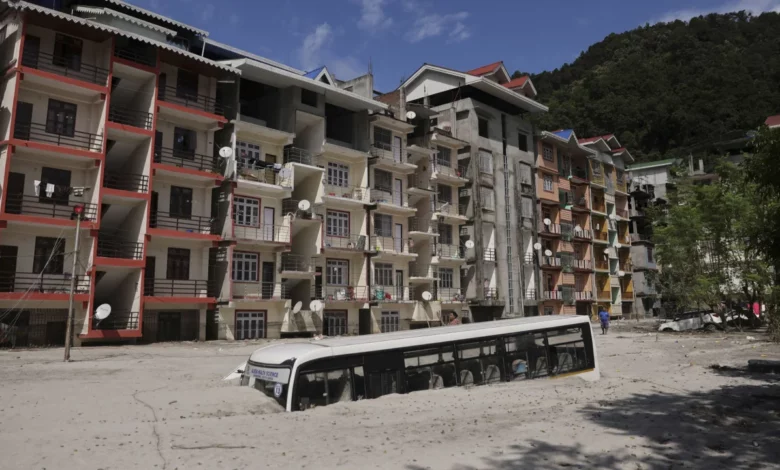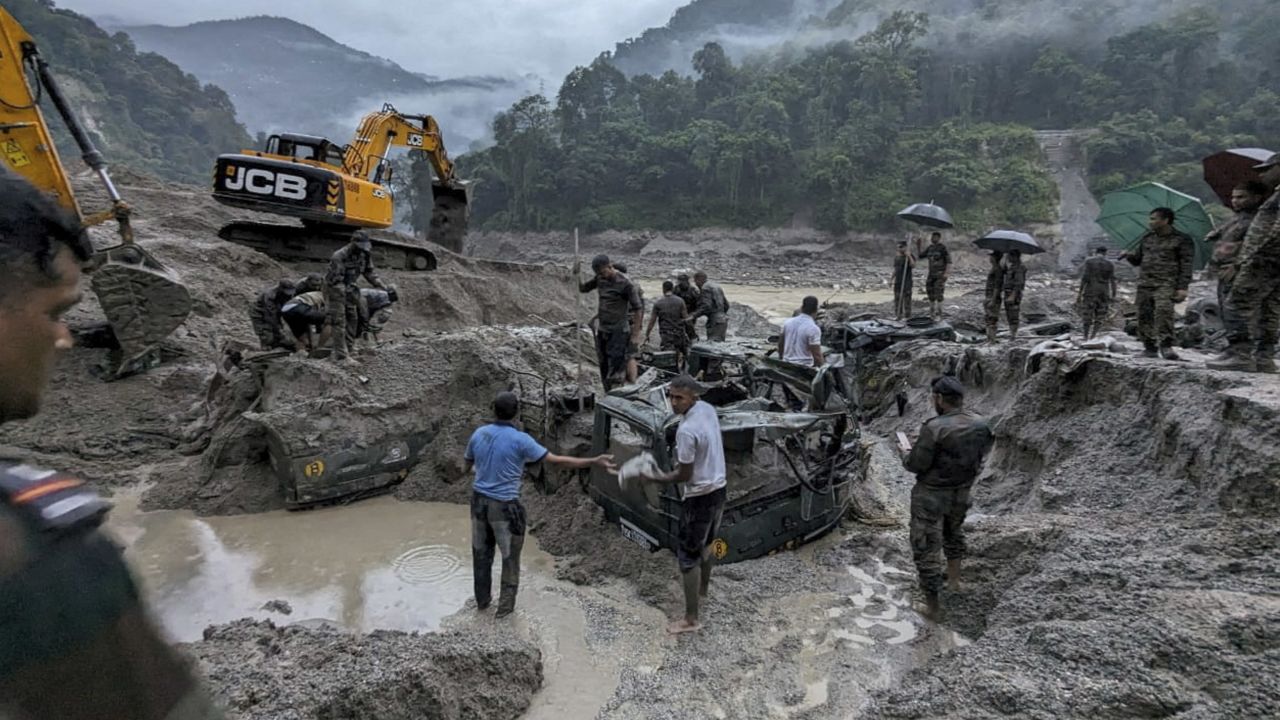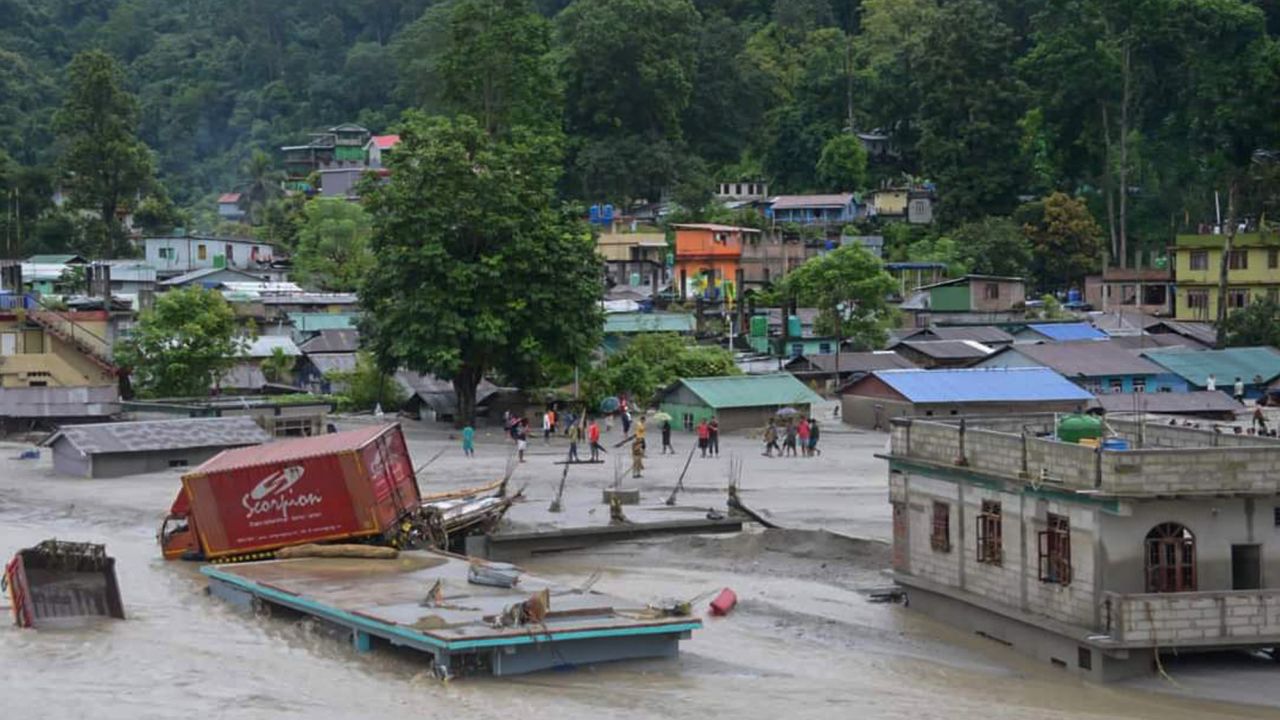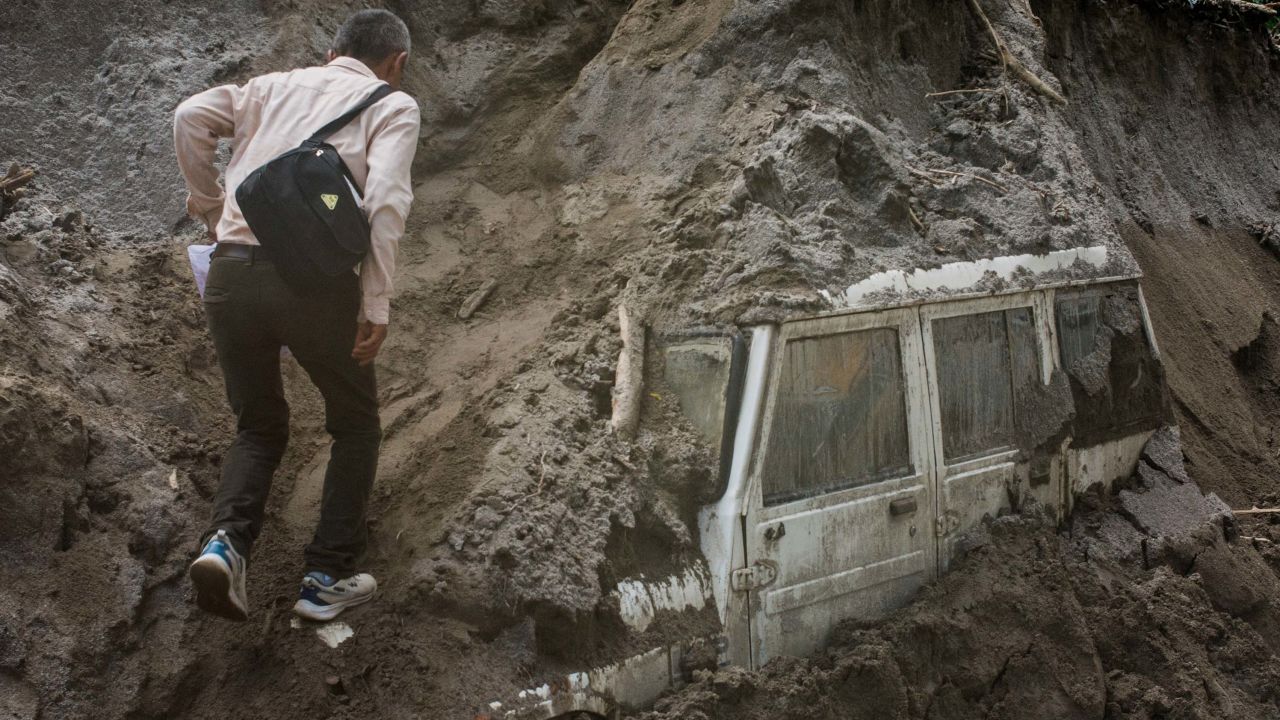
Following days of torrential rain in the northeastern state of Sikkim, torrents of water swept down narrow river valleys from Lohnak Lake, in the northern part of the state, damaging a dam and wreaking destruction in villages and Rangpo town, about 50 km (30 miles) south of state capital Gangtok.
Rescuers have found 25 bodies in the state and bodies of eight army personnel were found in the neighboring downstream state of West Bengal, Sikkim’s chief secretary Vijay Bhushan Pathak told Reuters.
He said 101 people were still missing in the latest of a series of natural disasters caused by extreme weather events in the Himalayas. Fourteen army personnel were among the missing, a defense ministry statement said.
The search for survivors was hampered by damaged roads, poor communications and bad weather, and residents were struggling to clear sludge and debris in the wake of one of the worst disasters in the remote region in more than 50 years.


Parveen Shama, the top district official of Jalpaiguri in West Bengal, said 41 bodies were found in the district.
Sikkim, a Buddhist state of 650,000 people wedged in the mountains between Nepal, Bhutan and China, received 101 millimeters (four inches) of rain in the first five days of October, more than double normal levels.
Lhonak Lake is a large glacial bullet-shaped water body that sits at the foot of a melting glacier.
An analysis of the images shows more than 60 percent of the water held in the lake drained out after the extreme rainstorm triggered a glacial lake outburst. This phenomenon happens when a glacial lake rises too high or the surrounding land or ice gives way and the lake bursts, sending water and debris rushing down mountains.
Scientists have long studied Lhonak Lake, identifying it as one of the fastest swelling glacial lakes in the region with a high risk for a potential glacial outburst, according to multiple studies.


Mukesh Kumar, a 43-year-old migrant worker in Rangpo, described how he and his neighbors had barely 10 minutes to escape before the flash flood hit.
“Had we not left for another two minutes, we might have drowned,” said Kumar, staring at the sludge and debris covering his lodgings.
Residents told Reuters that many people whose dwellings were on the ground floor could not have survived.
Baiju Sharma, 45, who ran a furniture business, surveyed the aftermath of the disaster.
“Where you are standing is 15 feet (4.5 meters) higher than earlier. You are standing on his house,” Sharma said, pointing towards his neighbor.
Government officials said about 2,000 tourists stuck in cut off areas of northern Sikkim were reported to be safe, and state authorities and the army had provided them with food and communication facilities to contact their families.
Known as the rooftop of the world, the ecologically sensitive Himalayan region is prone to flash floods and landslides, and flooding is not unusual in Sikkim.
But scientists are clear that extreme weather is becoming more frequent and more intense as the human-caused climate crisis accelerates.
CNN’s Helen Regan, Akanksha Sharma and Sania Farooqui contributed reporting




